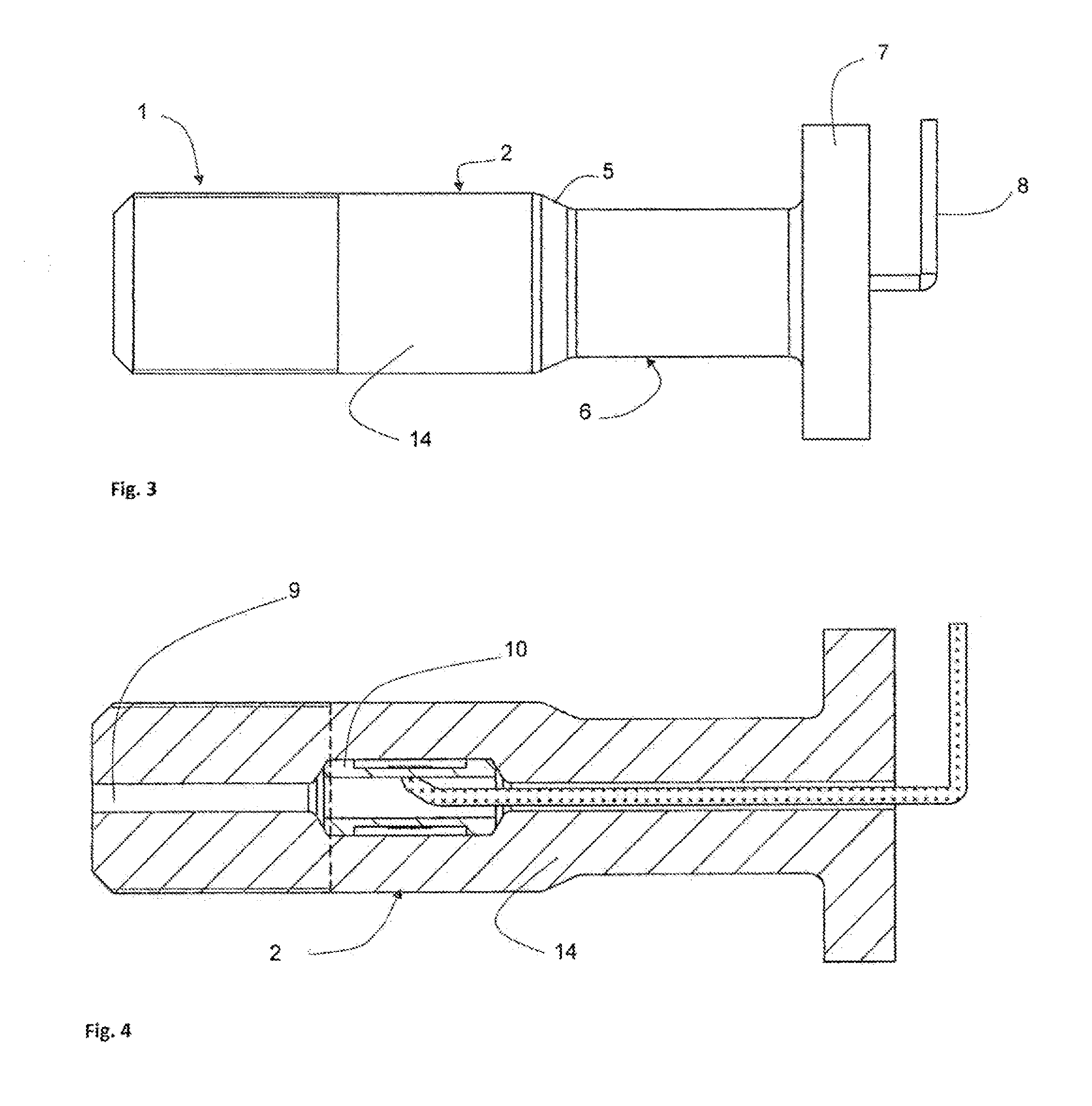Sensor-containing connection element and manufacturing method
a technology of connection element and manufacturing method, which is applied in the direction of screws, instruments, force/torque/work measurement apparatus, etc., can solve the problems of low cost, affecting the quality of the connection, etc., and achieves the effect of low cos
- Summary
- Abstract
- Description
- Claims
- Application Information
AI Technical Summary
Benefits of technology
Problems solved by technology
Method used
Image
Examples
Embodiment Construction
[0050]According to the invention, the proposed construction substantially consists of a longitudinally oriented support structure (14) and a sensor unit (10). The object of the support structure (14) is that of a connection element. The support structure (14) consists of a threaded region (1) at the ends thereof, as well as a top part (7), or alternatively, a further threaded region (1) or a further top part (7). A resilient region (2) inside which the sensor unit (10) is integrated is provided in addition. The sensor unit (10) in this case is located in the secondary flux of force of the support structure (14) and is arranged coaxially in the interior thereof. In order to exploit further the advantages of this simple construction, the sensor unit (10) is intended to be integrated during the manufacturing process of the support structure (14). The sensor unit (10) undertakes the task of measuring the axial pretensioning force acting in the connection element as well as transverse fo...
PUM
| Property | Measurement | Unit |
|---|---|---|
| plastic deformation | aaaaa | aaaaa |
| forces | aaaaa | aaaaa |
| signal transmission | aaaaa | aaaaa |
Abstract
Description
Claims
Application Information
 Login to View More
Login to View More - R&D
- Intellectual Property
- Life Sciences
- Materials
- Tech Scout
- Unparalleled Data Quality
- Higher Quality Content
- 60% Fewer Hallucinations
Browse by: Latest US Patents, China's latest patents, Technical Efficacy Thesaurus, Application Domain, Technology Topic, Popular Technical Reports.
© 2025 PatSnap. All rights reserved.Legal|Privacy policy|Modern Slavery Act Transparency Statement|Sitemap|About US| Contact US: help@patsnap.com



